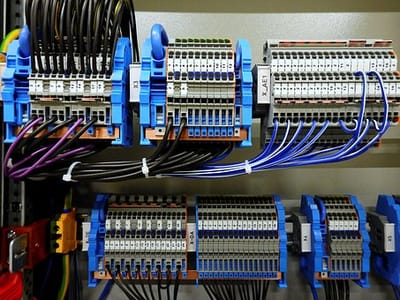Ask an emergency electrician
4 ways to deal with wet outlets: Ask an emergency electrician

A wet outlet can posses a great threat if not dealt with at the right time. An action to repair or replace should be taken immediately based on how grave the problem is. In this article, we have listed a few tips you can do for the moment until a licensed electrician arrives for a permanent solution.
The most common areas to experience a wet outlet are the bathrooms, kitchen or in a few cases your washbasin. Therefore electrical outlets need to be strictly followed at these spots to safeguard your property.
So even if after taking all precautions you have a wet outlet? It may seem like it’s ok but there are several ways to ensure that no major accident takes place.
Reasons for wet electrical outlets
The below mentioned common causes are compiled by a research carried out by the Australian National University
Damage or burst pipes - The pipes at times are fitted through a narrow space to make way to the original socket with no passage of air around it. They eventually tend to burst and the water can cause a severe effect on the outlets in that wall.
House Floods - This is quite a rare sight. If there are any ground-level outlets on your property then it might be dangerous. But most people avoid ground-level sockets in bathrooms or kitchen areas.
A garden on your property or a roof leak - water from the roof could seep through unnoticed spaces and leak in the wall corners of your room and ultimately could flow inside the wall sockets. This is common in houses that have set up a mini garden space in their balcony.
In brief, many situational cases can lead to wet power points that are beyond the homeowner’s control. The safest advice we can recommend to you is a preventive action. Waterproofing your sockets by sealing the edges of your mounts is one of the wise ways to avoid any probable mishap.
In case of evident situations where you can see the water get into the outlets, don’t wait for it to dry on its own and follow the below-mentioned steps.
Activate your GFCI sockets
Any kind of moisture or water can increase the risk of a current. Chances are that it may cause a short circuit or a ignite a fire. To avoid this, electrical companies in Australia use the Ground Fault Circuit Interrupter (GFCI) sockets.
Essentially, this works as an automated safety gear and activates on emergency. Similar in operational purpose as a power surge, the activation starts as soon as the water gets into the electrical outlets and cuts off the power.
This reduces considerable damage or the risk of electrocution on your property.
Turn Off Fuse Power
Another alternative for those who do not have GFCI installed, you can manually turn off the power through your main Fuse Box.
You can ask your local electrician or an emergency electrician on how to use the fuse in case of such events. It is important to know the right switch before you take this step by yourself.
Electrical emergencies cannot be neglected. It needs immediate expert attention and hence a 24-hour emergency electrician should be on your phonebook irrespective of how minor the situation is.
